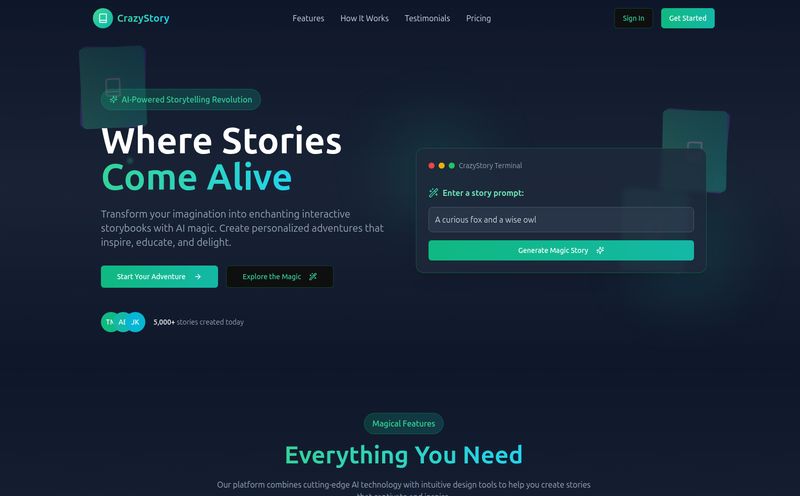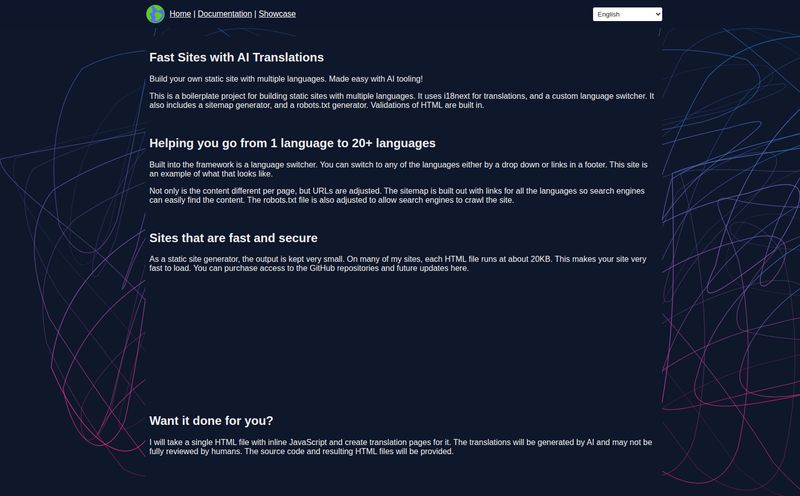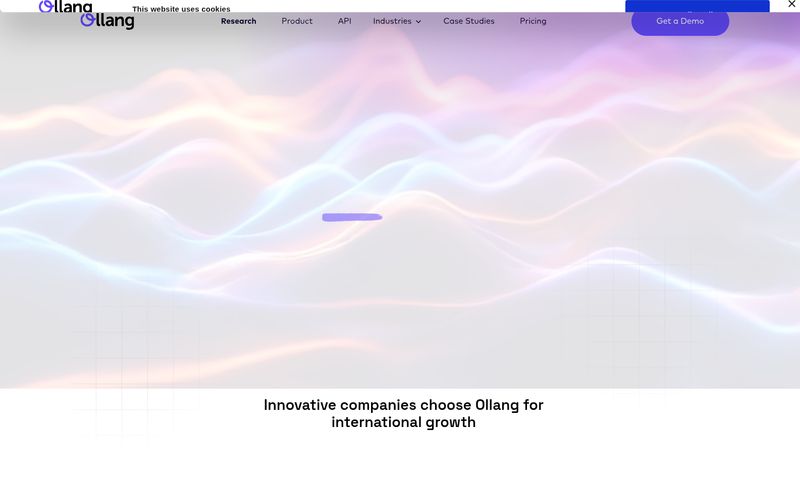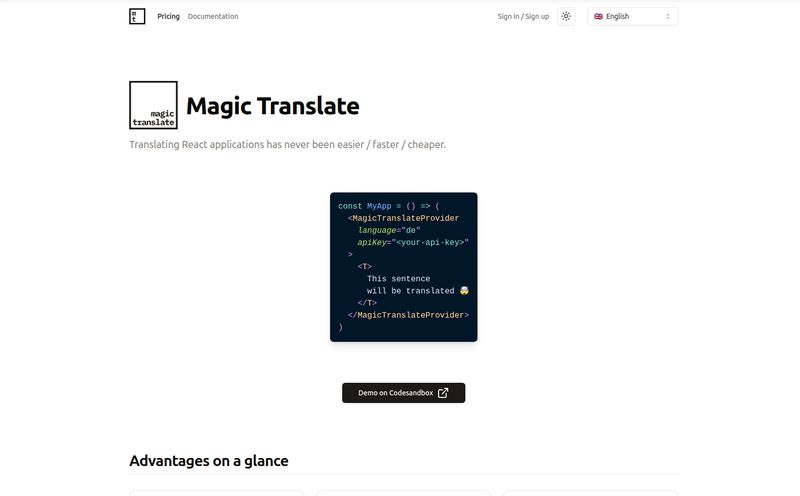As content creators and marketers, we pour our blood, sweat, and an unhealthy amount of caffeine into our videos. We craft the perfect script, nail the lighting, and edit for hours until our eyes blur. And what’s the goal? To connect with an audience. But what if that audience is bigger than we think? What if it speaks Spanish, or Hindi, or Japanese?
For years, reaching a global audience meant one of two things: painstakingly adding subtitles that half your audience ignores, or shelling out a fortune for professional dubbing. I’ve priced it out before, just for fun. Let me tell you, it’s not for the faint of heart or light of wallet. It involves hiring voice actors, booking studio time, and managing a project that can feel as complex as launching a satellite. It’s a huge barrier. A wall.
So, when a tool like DubSync.AI pops up on my radar, I can't help but get a little excited. The promise is huge: an AI-powered system that automatically translates and dubs your videos into over 20 languages. It sounds like something straight out of Star Trek. A universal translator for the YouTube generation. But does it live up to the hype? Let's get into it.
So What Exactly is DubSync.AI?
At its core, DubSync.AI is a platform designed to do one thing, and do it well: automate video dubbing. You upload your video, and its AI gets to work. It transcribes the audio, translates the text, and then generates a new audio track in the language of your choice. It claims support for over 20 languages, which is a pretty impressive starting lineup.
Think of it less like a simple text-to-speech robot and more like a digital localization team that fits on your laptop. The whole idea is to take a process that was once artisanal, expensive, and slow, and make it accessible to everyone. From a solo YouTuber in their bedroom to a marketing team at a startup, the potential is obvious. You're no longer just a creator for your country; you're a global creator. And honestly, that’s a pretty powerful shift in perspective.
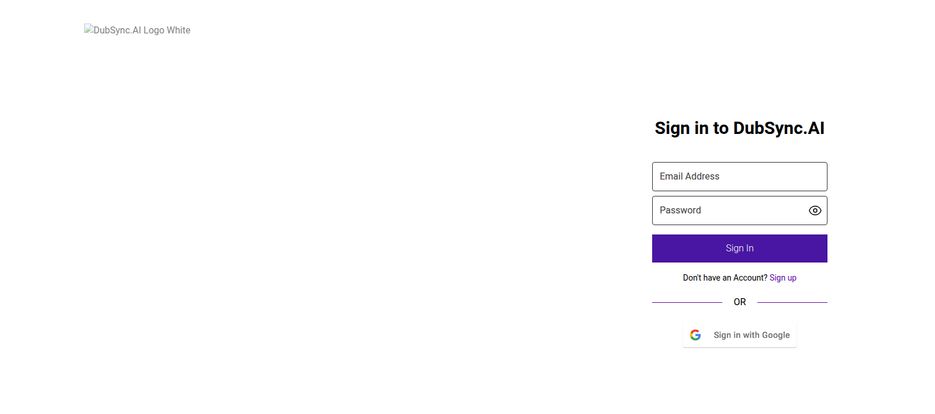
Visit DubSync.AI
Why AI Dubbing is More Than Just a Gimmick
Okay, I know what some of you are thinking. “AI voices? Aren’t they robotic and soulless?” And yeah, for a long time, they were. We’ve all been subjected to that monotone GPS voice that butchers street names. But the technology has made some serious leaps recently.
Finally Breaking the YouTube Sound Barrier
The creator economy is a global phenomenon. Someone in Seoul can be a massive fan of a creator in Brazil. The biggest hurdle has always been language. YouTube knows this, which is why they introduced their multi-language audio track feature. This allows creators to upload different language audio tracks for a single video, and viewers can choose their preferred language. It's a fantastic feature, but it was only really usable by the MrBeasts of the world who have the budget for pro dubbing. A tool like DubSync.AI could democratize this feature, making it a viable strategy for channels of all sizes. Suddenly, you're not just competing for views in the English-speaking world; you’re tapping into massive, underserved markets.
The Untapped SEO Gold of Going Global
As an SEO guy, this is where my ears really perk up. Localizing your content isn’t just about the audio; it’s about discoverability. When you have a Spanish version of your video, you can create a Spanish title and description. You can target Spanish keywords. You're essentially opening up a brand-new storefront in a different country. This means new search traffic, new subscribers, and a more diverse, resilient audience base. It’s not just about getting more views on one video; it’s about building a truly international brand. It's a testament to how far tehcnology has come.
A Peek at DubSync.AI's Inner Workings
Based on what I’ve seen, the platform is aiming for simplicity. The sign-in page is clean, offering a standard email login or a quick sign-in with Google. No unnecessary clutter. This usually tells me the developers are focused on the user experience, which is always a good sign.
The main feature, of course, is the automatic translation and dubbing. While I haven't seen a full-blown demo of the backend, the process is implied to be straightforward: upload, select languages, and let the AI handle the heavy lifting. The appeal here is scalability. You could theoretically localize your entire back catalog of videos in the time it would take to get a single one professionally dubbed. That’s a game-changer.
The Good, The Not-So-Good, and The Big Question
No tool is perfect, right? Especially in a field as new as AI dubbing. After poking around and thinking through the implications, here’s my breakdown.
The Things I'm Genuinely Excited About
First and foremost, the automation is a massive win. It saves an incredible amount of time and, presumably, money. The ability to reach audiences in over 20 languages without becoming a project management wizard is just… chef’s kiss. It levels the playing field, allowing smaller creators to compete on a global stage. This isn't just an improvement; it's a whole new way of thinking about content strategy.
Potential Roadblocks and Concerns
The elephant in the room with any AI voice tool is quality. There’s a fine line between a natural-sounding voiceover and the dreaded “uncanny valley” where things just feel… off. Without extensive samples, it's hard to judge how well DubSync.AI handles things like tone, inflection, and emotion. Will a joke land with the same timing? Will a moment of sincerity feel genuine? This is the single biggest factor that will determine its success. Also, like most SaaS tools, you have to create an account. A minor inconvenience, but worth noting for people who are allergic to new sign-ups.
The All-Important Question: What's the Price?
Ah, pricing. The million-dollar question. As of right now, DubSync.AI is playing this one close to the chest. There isn’t a public pricing page that I could find. However, one of the images I saw had a faint but clear “Try For Free” callout. This strongly suggests a freemium model or at least a free trial period.
My educated guess? We’ll likely see a tiered system based on the number of minutes you can process per month. Something like:
- A Free Tier: Maybe 5-10 minutes a month to test the waters.
- A Creator Tier: A reasonable monthly fee for a solid chunk of minutes, aimed at individual YouTubers.
- A Business/Agency Tier: Higher limits, team features, and priority support for a premium price.
This is pure speculation on my part, but it’s the model that makes the most sense in this market.
A Quick Look: DubSync.AI vs. Traditional Dubbing
To put it all in perspective, let’s see how this new approach stacks up against the old way of doing things.
| Factor | Traditional Dubbing | DubSync.AI |
|---|---|---|
| Cost | Extremely high (thousands per video) | Likely an affordable monthly subscription |
| Speed | Weeks or even months | Minutes or hours |
| Scalability | Very difficult to scale across many videos | Effortless to scale |
| Languages | Limited by your budget | 20+ languages out of the box |
Frequently Asked Questions About DubSync.AI
- How does DubSync.AI actually work?
- It uses artificial intelligence to analyze your video's audio, transcribe it, translate the text into a new language, and then generate a new voice track in that language, which is then synced to your video.
- But do the AI voices sound natural?
- This is the big question. Modern AI voice synthesis has improved dramatically, but the quality can vary. The true test will be in how well it captures the nuance and emotion of the original speaker. I'd recommend using their free trial (if available) to test it on your own content.
- What languages does DubSync.AI support?
- The platform states it supports over 20 languages, but the specific list isn't publicly available yet. You would likely see common languages like Spanish, French, German, Hindi, Mandarin, and Japanese included.
- Is DubSync.AI a free tool?
- It appears to have a free trial or a free-tier option. For more extensive use, it will almost certainly be a paid service, likely with a monthly subscription based on usage.
- Who is the ideal user for this tool?
- It’s perfect for YouTube creators, online course instructors, social media marketers, and businesses that want to expand their video content's reach internationally without the massive cost of traditional dubbing.
So, Is It Time to Sync Up with DubSync.AI?
Here’s my final thought. Tools like DubSync.AI represent the future of content creation. It’s a future where your ideas aren’t limited by geography or language. While the ultimate verdict will hinge on the final quality of the AI voices and a transparent pricing structure, the promise is undeniable.
For too long, global reach has been a privilege reserved for the top 1% of creators. If DubSync.AI can deliver on its core promise, it could be one of the most powerful tools a creator can add to their arsenal. It’s about working smarter, not harder, and finally being able to speak to the world. I, for one, am keeping a very close eye on this one. It might just change the game.
